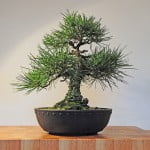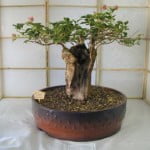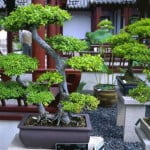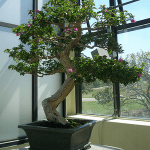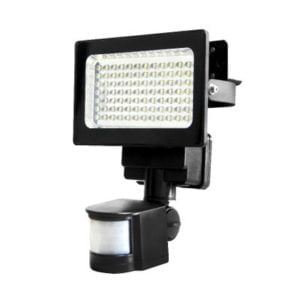The Chinese art of penjing is very similar to and is the precursor of the Japanese art of bonsai. Like Japanese bonsai, these plants seem to exhibit more than just a physical beauty.
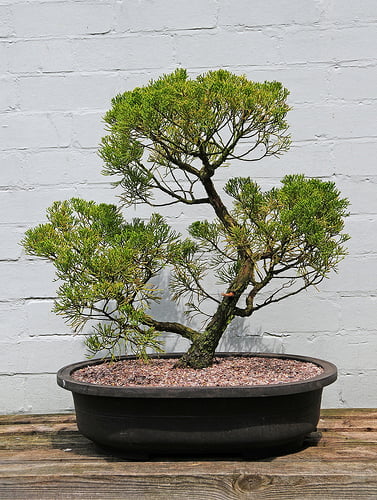
As the Chinese art is intended for outdoor display, the plants tend to be somewhat larger than seen in Japanese bonsai.
The Chinese influence on the early bonsai masters is apparent since the Japanese still use the same characters to represent bonsai as the Chinese. Later, the Japanese, who used it to create beautiful gardens, adopted the bonsai technique.
When the plant reached the Japanese island, however, regional gardening techniques influenced the development of bonsai in Japan, distinguishing it from the Chinese variety.
The Chinese penjing is meant for outdoor display and is usually larger than Japanese bonsai, which is developed for indoor display.
Outside Bonsai trees can be very striking when made the focal point of a garden, especially a Japanese-style garden. The Japanese gardeners created the bonsai oftentimes due to lack of space, and their love of nature.
For the Japanese, bonsai represents a fusion of strong ancient beliefs with the Eastern philosophies of the harmony between man, the soul and nature.
It is easy to see how this has influenced the Japanese approach to bonsai. One of the distinguishing characteristics of bonsai styled by a traditionally trained Japanese artist is the attention that is given to detail.
Today, however, bonsai trees are recognized as a Japanese system of growing stunted plants. The Japanese art of pruning and shaping trees and shrubs that produces long-lived miniature container plants.
Probably the most difficult part of caring for a Japanese Bonsai tree is keeping it small. The Japanese tend to focus on using native species for their bonsai namely pines, azaleas and maples. These are regarded as the traditional bonsai plants.
A Japanese Juniper is also considered a traditional tree for bonsai and makes a great plant for the beginner. Other traditional trees for bonsai are pine, maple, flowering apricot, japanese wisteria, juniper, flowering cherry, and larch. When demand for the small trees outgrew the supply, Japanese gardeners began to train bonsai from native trees.
Caring for bonsai is no longer just a Japanese pastime. Americans also enjoy the art. The art of bonsai, as developed in America, is much freer in concept and style than Japanese bonsai. By contrast, Japanese bonsai tend to look neater and more formalized.
There are many taboos and superstitions in Japanese bonsai, all rooted throughout society. All of a sudden a topic that was static and dull, such as Japanese culture or bonsai, takes on a new light and air of mystery.

[wd_hustle id=’share’ type=’social_sharing’]


